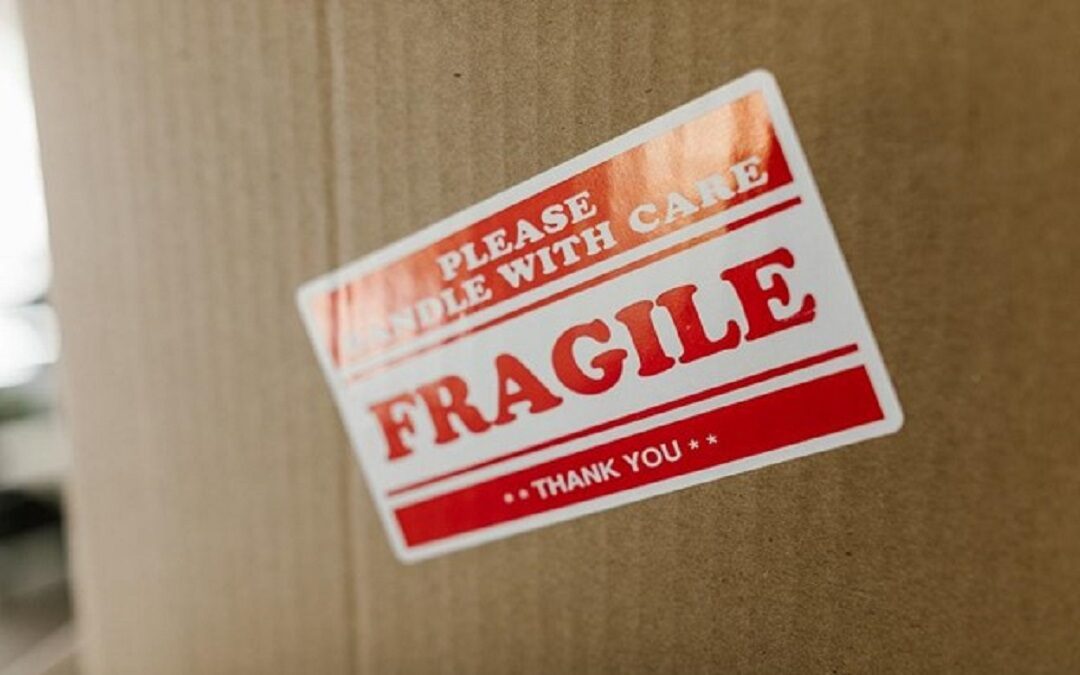Ensuring you have the correct packaging supplies to ship fragile items is imperative and could be the difference between your item getting to its destination in one piece or being sent back for a replacement.
Fragile items demand the utmost amount of care when it comes to shipping, or retailers risk broken or damaged items that could harm their reputation! While the type of item will dictate the type of protective supplies you’ll need to use, finding quality materials is essential, so The Packaging Company is here to help you secure the best protective materials you can.
To help you understand how to pack fragile items, we’ve compiled this guide. We’ll discuss what items are considered to be fragile, how to pack them and the best materials you should use.
What Items Would Be Considered Fragile?
Firstly, it’s important to determine which materials would be considered fragile by most standards. Typically, fragile items refer to anything that is easily shattered or easily broken into large pieces.
Additionally, this includes anything made of delicate materials like paper, as this material crushes and tears easily. This can include household decorations, crockery, glass, picture frames, musical instruments and more!
Additionally, some of these items can refer to high-value items that can’t be exposed to any moisture or force, including technological devices. Some other examples of fragile items include:
- Glasses
- Marble items
- Technology screens
- Ceramics
- Porcelain
How to Pack Fragile Items
The first step to ensuring that your items get to their destination in one piece is knowing how to effectively pack fragile items. Here’s a step-by-step guide on how to do this:
Choose The Best Solution Based On Your Product
The best way to pack fragile items is to determine the necessary materials for your specific product. Depending on how fragile the item you’re transporting is, your product may require different levels of protection.
For example, if you’re transporting glass items, you’ll need more robust protection as these items will easily break. Whereas if you’re transporting items that can’t be bent, like paper documents, you’ll need protection, just not nearly as much as glass products.
Find A Slightly Larger Than Necessary Box
To ensure you have enough room to store your protective items like packing peanuts or void fill, it’s important that you use a slightly larger than necessary box.
This ensures the protective material can form a barrier around the product and absorb the shock while in transit. If you use a box that’s too small, you risk not being able to use enough protective material, meaning you run the risk of products being damaged in transit.
Select A Cushioning Material
Once you’re happy with your box, you can select a cushioning material. You can choose from products like bubble filling, air pillows or kraft crinkle depending on your product’s needs!
Add A Fragile Label
The final step to packing fragile materials is to ensure the packaging has clear signage that it contains fragile items with a fragile label.
While this in itself doesn’t protect the contents, it signals to the handlers that they need to treat the package with care while in transit. This ensures that handlers know not to throw items or stack them in ways that could harm the contents.
The Best Materials To Use To Protect Fragile Items
The best way to secure your fragile items during transit is knowing about the correct materials to use.
Using the right materials will stop your items from crashing against each other and potentially breaking and ensure that any shock is absorbed and doesn’t risk any shattering or breaking in your items. Here’s a guide on some ways you can pack fragile items.
Use Void Fill
Void fill, or more specifically eco-friendly void fill, is one of the most common and simple ways to secure fragile items like glasses and crockery. Void fill is typically made from shredded recycled paper and other similar materials like eco-friendly packing peanuts to pack around fragile items in a box.
These materials fill in the gaps between fragile items and the surrounding box, providing adequate cushioning that protects items from impact.
Use Custom Inserts
Custom inserts are a very useful way of providing an extensive amount of protection for very fragile items. You can typically find custom inserts for cosmetic products like perfume bottles or any product made of or with glass such as drink glasses and cell phones.
Custom inserts are typically moulded to the exact product’s shape with a foam protective material that absorbs shock and keeps the product in place during transit.
Use A Bubble Mailer
Bubble mailers are excellent protective packaging for paper items or delicate materials that aren’t at risk of shattering or tearing but do need to be handled with care.
Bubble mailers appear, at face value, like a standard flimsy mailer, but have a protective padding layer to provide extra cushioning for transit. These mailers are good for transporting items like DVDs, CDs, important documents like certificates, or jewelry.
Use A Rigid Mailer
If you don’t want any of your fragile items like documents to be bent in transit, then a rigid mailer is for you! Rigid mailers are made from super strong material that makes it very hard to bend or tear the packaging, keeping the contents of your packaging safe. This is useful for items like prints, books or documents.
Looking For Packaging Supplies For Products That Are Fragile? Contact The Packaging Company Now!
If you’re looking for the perfect fragile packaging supplies, shop at The Packaging Company now! We have an extensive supply of packaging supplies for all kinds of fragile material, making us the go-to stop for all of your shipping and packaging needs. Order today!




